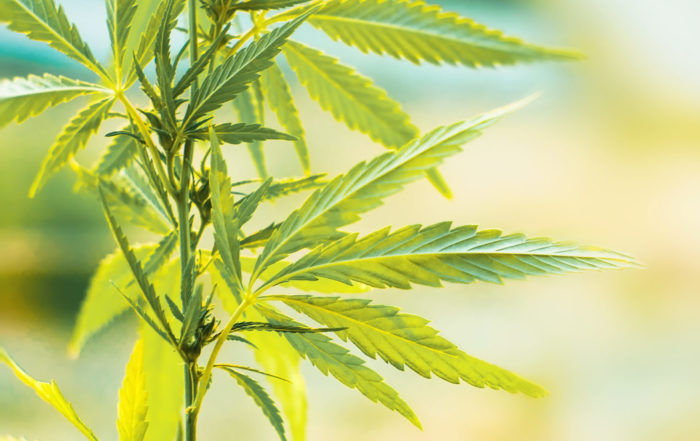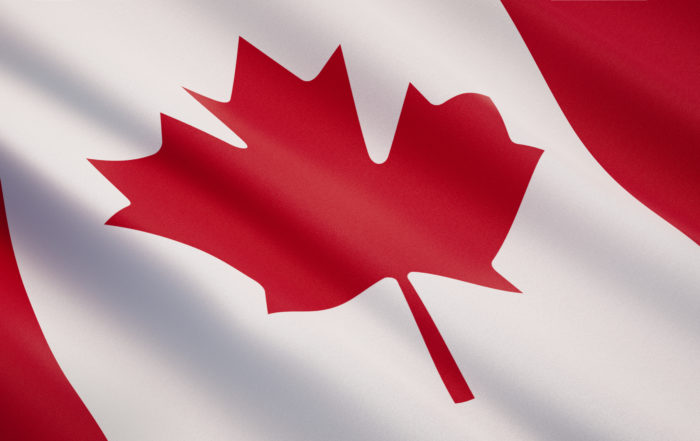The Tobacco Industry and the Scientific Community: A Public Health Response
By Dennis A. Henigan, Vice President for Legal and Regulatory Affairs, Campaign for Tobacco-Free Kids[1]
The following is a member perspective in response to the Winter 2020 article, “Improving Cooperation Between the Nicotine Industry and the Scientific Community.” FDLI welcomes other written responses to this important dialogue.
In their article in the Winter 2020 issue of Update magazine,[2] Jim Solyst, John Hughes, and Karl Fagerström describe the experience of the Swedish Match Science Advisory Panel (SAP) as an illustration of the “cooperation between companies and independent scientists” to achieve “maximum public health benefits.” The authors acknowledge “possible skepticism from the scientific community” about the work of the SAP. Unfortunately, the article itself furnishes a sufficient basis for skepticism about Swedish Match’s efforts to enlist “independent scientists” to achieve its regulatory objectives for its General Snus and Zyn tobacco products.
The article emphasizes that “Swedish Match does not sell cigarettes and has a tradition of transparency.” That claimed “tradition of transparency” certainly is not on display in the Update article. What goes unmentioned is that the company is a leading seller of cheap, mass-produced cigars, under the brand names White Owl, Game, 1882, Jackpot, and Garcia y Vega, including various sweet-flavored products with an obvious appeal to young people. Just in the last year, the company has introduced “Swiss Roll” cigarillos, with ad images that evoke chocolate “twinkie-like” foods;[3] Strawberry Colada cigarillos;[4] White Chocolate cigarillos with the tag line “How Sweet it is!”;[5] “Swirl Chocolate & Vanilla,” evoking “swirl” soft-serve ice cream;[6] and “Spiked Lemonade” cigarillos.[7] Some of these products have clearly been introduced to the market as new products (“Coming Soon,” “Available January 2021”) without the required FDA premarket order, thus demonstrating the company’s defiance of the FDA regulatory process. According to the company website, Swedish Match is “the number two player in the US market for mass produced cigars”[8] and shareholders were recently told that its cigar category has shown “strong growth” in 2020, “likely helped by COVID-19 effects,” with shipments of 500 million sticks during the 3rd quarter alone.[9]
Sweetly-flavored cigars like those marketed by Swedish Match are particularly attractive to young people and can function as starter products that can lead to a lifetime of nicotine addiction. Studies show that use of flavored cigars is highest among youth compared to young adults and older adults.[10] The government’s PATH study showed that in 2013-14, 73.8% of youth cigar smokers reported that they smoked cigars “because they come in flavors I like.”[11] Although cigarette smoking among young people has declined sharply in recent years, cigar smoking among youth has declined much less rapidly and now current use of cigars among U.S. high school boys matches cigarette use.[12] Black high school students smoke cigars at more than three times the rate for cigarettes.[13]
Understanding that Swedish Match is a leader in the marketing of cheap, flavored, mass-produced cigars with an appeal to youth surely casts a different light on the article’s suggestion that the SAP arose from a straightforward belief in “harm reduction” from tobacco products. At the same time Swedish Match has enlisted researchers to advise it in pursuing premarket orders for products like Swedish snus and Zyn because “switching from smoking to less risky products could save lives,” the company is aggressively promoting undeniably addictive and lethal cigars, including introducing new, flavored cigars to hook kids. The article notes that the researchers on the SAP were aware of the “Swedish Experience” with snus, in which health-conscious smokers switched to snus, but fails to note that, in Sweden, tobacco product advertising is prohibited. Thus, in Sweden, companies like Swedish Match would be barred from engaging in the advertising that, in the U.S., undercuts any purported effort to reduce the harm from combustible products by getting smokers to switch.
The article also leaves the misleading impression that the only smokeless products sold by Swedish Match in the U.S. adhere to the GOTHIATEK voluntary quality standards, which set limits for harmful constituents in snus. The authors fail to disclose that Swedish Match also sells traditional chewing tobacco under the Red Man brand and traditional moist snuff under the Longhorn and Timber Wolf brands. According to the company’s website, Red Man is the #1 chewing tobacco brand in the U.S.[14] Published data indicates that some of these brands fail to meet the GOTHIATEK standards for various toxicants, including NNN, a powerful carcinogen.[15] It is revealing that, when FDA proposed a rule that would limit NNN in all smokeless tobacco products, Swedish Match filed comments opposing the rule,[16] even though the agency concluded that the rule would prevent thousands of cases of oral cancer.[17]
The article presents an idealized view of tobacco harm reduction, in which the mere introduction to the market of less hazardous products necessarily yields a public health benefit. But any possible benefit depends on the population-wide effect of these “reduced risk” products, including whether they actually induce smokers to quit smoking, when they otherwise would not have done so. There is substantial evidence that the effect of smokeless products, including snus, in the U.S. is rather to enable smokers to continue smoking, by feeding their nicotine addiction when they are in places where smoking is illegal or impractical.[18] A report issued by the Centers for Disease Control and Prevention and the National Cancer Institute found that, unlike in Sweden, evidence from the U.S. suggests that smokers use smokeless tobacco products in conjunction with smoking.[19] For a company like Swedish Match, overwhelmingly dependent on profits from the sale of highly addictive and hazardous cigars and traditional smokeless tobacco products in the U.S., the incentives are to manage their marketing of “reduced risk” products so as to avoid seriously disrupting the far more profitable markets for their other tobacco products.
It obviously benefits Swedish Match to create the misleading impression that its only interest is tobacco harm reduction, particularly if it can enlist respected research scientists in doing so. The article makes a passing reference to the company’s bearing “the burden of the industry’s past,” without recognizing that a key component of that shameful history was the tobacco industry’s manipulation of respected scientific institutions and individual scientists to mislead the public into believing that the industry was pursuing valid scientific inquiry into the impact of its products.[20] The failure of authors Solyst, Hughes, and Fagerström to reveal key, material facts about the products sold by the company they are assisting is more than sufficient reason to question whether their article represents simply the most recent example of industry manipulation of scientists to mislead the public.
There is, in fact, a critical role for truly independent, third-party scientists in developing data material to FDA premarket and modified risk applications. As noted recently by several prominent tobacco control researchers,[21] on the crucial issue of the likely impact of new tobacco products and proposed modified risk claims on youth, instead of setting out the protocols and safeguards necessary to protect the independence of scientists, and the integrity of studies, funded by tobacco companies to develop relevant data, FDA has been granting company applications, some by Swedish Match, with insufficient data on these issues. The unacceptable result is that companies are being authorized to market new products, and make claims of reduced risk, even though the data presented is insufficient to meet the statutory public health standard.
The appropriate role of independent scientists in the regulatory process, within a system constructed and supervised by FDA with strong safeguards to ensure true independence, transparency, quality and protection of study subjects, is a far cry from the now-apparent misuse of scientists by Swedish Match to mislead the public about the company and its products.
[1] Thanks to Ann Boonn of the Campaign for Tobacco-Free Kids for her invaluable research assistance.
[2] Solyst, J., Hughes J. and Fagerstrom, K., “Improving Cooperation Between the Nicotine Industry and the Scientific Community: The Swedish Match Science Advisory Panel Experience,” Update Magazine, Winter 2020.
[3] See ad in Convenience Store Decisions, March 2020, p. 39, https://cstoredecisions.com/2020/03/03/march-2020-issue-the-2020-category-management-review/
[4] See ad in Convenience Store Decisions, April 2020, p. 35, https://cstoredecisions.com/2020/04/07/april-2020-issue-c-stores-conquer-new-hr-challenges/.
[5] See ad in Convenience Store Decisions, October 2020, p. 31, https://cstoredecisions.com/2020/10/13/october-2020-issue-power-market-jump-starts-expansion/.
[6] See ad in Convenience Store Decisions, December 2020, p. 23, https://cstoredecisions.com/2020/11/30/december-2020-issue-40-under-40/.
[7] See ad in http://www.cstoreproductsonline.com/tobacco/white-owl-spiked-lemonade-cigarillos?utm_source=Marketing%20Cloud&utm_medium=email&utm_campaign=CSP-Tobaco_05-09-18&sfmc_s=1743690
[8] https://www.swedishmatch.com/Our-business/cigars/
[9] https://www.swedishmatch.com/globalassets/documents/transcripts/swma-se_transcript_2020-10-27.pdf
[10] Delnevo, C, et al., “Preference for flavoured cigar brands among youth, young adults and adults in the USA,” Tobacco Control 24(4):389-94, 2015. Rose, S, et al., Flavour types used by youth and adult tobacco users in wave 2 of the Population Assessment of Tobacco and Health (PATH) Study 2015-2015,” Tobacco Control, published online September 21, 2019.
[11] Ambrose, BK, et al., “Flavored tobacco Product Use Among US Youth Aged 12-17 Years, 2013-2014,” Journal of the American Medical Association, published online October 26, 2015.
[12] U.S. Centers for Disease Control & Prevention (CDC), “Tobacco Product Use Among Middle and High School Students—United States, 2020,” Morbidity and Mortality Weekly Report (MMWR) 69, December 17, 2020, https://www.cdc.gov/mmwr/volumes/69/wr/pdfs/mm6950a1-H.pdf.
[13] CDC, “Tobacco Product Use Among Middle and High School Students—United States, 2020,” MMWR, 69, December 17, 2020, https://www.cdc.gov/mmwr/volumes/69/wr/pdfs/mm6950a1-H.pdf.
[14] https://www.swedishmatch.com/Our-business/smokefree/Market-development/
[15] See Borgerding, MF et al., “The chemical composition of smokeless tobacco: A survey of products sold in the United States in 2006 and 2007,” Regulatory Toxicology and Pharmacology 64 (2012) 367-387; Ammann JR et al., “A Survey of NNN and Total Water Contents in Select Smokeless Tobacco Products Purchased in the United States in 2015, J. Agric. Food Chem. 2016 June 1, 64 (21): 4400-4406; Song M-A, et al., “Chemical and Toxicological Characteristics of Conventional and Low-TSNA Moist Snuff Tobacco Products,” Toxicol. Lett. 2016 March 14; 245:68-77.
[16] https://www.regulations.gov/document?D=FDA-2016-N-2527-7162
[17] FDA, Tobacco Product Standard for NNN Levels in Finished Smokeless Tobacco Products, Proposed Rule, 82 Fed. Reg. 8004 (January 23, 2017).
[18] See Comments filed by Campaign for Tobacco-Free Kids and Tobacco Control Legal Consortium, in Docket No. FDA-2014-N-1051, Modified Risk Tobacco Product Applications; Applications for 10 Products Submitted by Swedish Math North America, Inc. (November 25, 2014), at 27-29 and studies cited therein. https://www.tobaccofreekids.org/assets/content/what_we_do/federal_issues/fda/regulatory/Comments_on_Swedish_Match_application_11_2014.pdf
[19] CDC and NCI, Smokeless Tobacco and Public Health: A Global Perspective (2014), at 69. https://cancercontrol.cancer.gov/brp/tcrb/smokeless-tobacco.
[20] See generally, U.S. v. Philip Morris USA, Inc. at al, 449 F.Supp. 1, 19-162 D.D.C. 2006), aff’d in relevant part, 566 F.3d 1095 (D.C. Cir. 2009), cert. denied, 130 S.Ct. 3501 (2010).
[21] Halpern-Felsher, B. et al., “The Importance of Including Youth Research in Premarket Tobacco Product and Modified Risk Tobacco Product Applications to the Food and Drug Administration,” Journal of Adolescent Health 67 (2020) 331-333. https://www.jahonline.org/article/S1054-139X(20)30333-5/fulltext
Update Magazine
Spring 2021

 DENNIS A. HENIGAN is Vice President for Legal and Regulatory Affairs with the Campaign for Tobacco-Free Kids
DENNIS A. HENIGAN is Vice President for Legal and Regulatory Affairs with the Campaign for Tobacco-Free Kids





